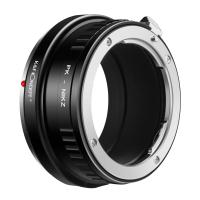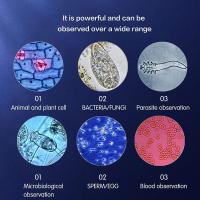What Does Thc Look Like Under A Microscope ?
Under a microscope, THC (delta-9-tetrahydrocannabinol) appears as colorless, needle-like crystals or elongated plates. These crystals are typically small, measuring only a few micrometers in length. THC is the primary psychoactive compound found in cannabis, and it is responsible for the plant's euphoric effects. When cannabis is consumed, THC binds to cannabinoid receptors in the brain, producing a range of effects, including altered perception, mood, and appetite. While THC is the most well-known cannabinoid, there are many other compounds found in cannabis that also have therapeutic potential. These include cannabidiol (CBD), which has been shown to have anti-inflammatory, analgesic, and anti-anxiety properties, among others.
1、 Crystal-like structure

THC, or delta-9-tetrahydrocannabinol, is the primary psychoactive compound found in cannabis plants. When viewed under a microscope, THC appears as a crystal-like structure. These crystals are known as trichomes and are found on the surface of the cannabis plant's flowers, leaves, and stems.
Trichomes are small, hair-like structures that are responsible for producing and storing the various compounds found in cannabis, including THC. When viewed under a microscope, these crystals appear as small, translucent structures that are often described as looking like tiny mushrooms or crystals.
Recent advances in microscopy technology have allowed researchers to gain a better understanding of the structure and function of trichomes. For example, studies have shown that trichomes are not only responsible for producing THC, but also other important compounds such as CBD, terpenes, and flavonoids.
Additionally, researchers have discovered that trichomes play an important role in protecting the cannabis plant from predators and environmental stressors. The sticky resin produced by trichomes can deter insects and other animals from feeding on the plant, while also helping to regulate the plant's temperature and moisture levels.
In conclusion, THC appears as a crystal-like structure when viewed under a microscope. These crystals are produced by trichomes, which are small, hair-like structures found on the surface of the cannabis plant. Recent advances in microscopy technology have allowed researchers to gain a better understanding of the structure and function of trichomes, revealing their importance in producing and protecting the cannabis plant.
2、 Distinctive shape and size

THC, or delta-9-tetrahydrocannabinol, is the primary psychoactive compound found in cannabis plants. When viewed under a microscope, THC appears as small, distinctively shaped crystals. These crystals are typically elongated and have a needle-like appearance, with a size ranging from 20 to 100 microns.
Recent advancements in microscopy technology have allowed for more detailed observations of THC crystals. For example, scanning electron microscopy (SEM) has revealed that THC crystals have a unique three-dimensional structure, with a complex network of ridges and valleys on their surface. This structure is thought to play a role in the way THC interacts with the body's endocannabinoid system.
In addition to their distinctive shape and size, THC crystals can also vary in color depending on their purity and processing. Pure THC crystals are typically translucent or white, while impurities can cause them to appear yellow or brown.
Overall, the microscopic appearance of THC crystals provides valuable insights into the chemical and physical properties of this important compound. As research into the medical and therapeutic uses of cannabis continues to expand, these observations will likely play an increasingly important role in understanding how THC interacts with the body and brain.
3、 Visible with polarized light

THC, or delta-9-tetrahydrocannabinol, is the primary psychoactive compound found in cannabis. When viewed under a microscope, THC appears as small, colorless crystals or trichomes. These trichomes are the small, hair-like structures that cover the surface of the cannabis plant and contain the highest concentration of THC.
Under polarized light, THC crystals can appear as bright, colorful shapes due to their unique molecular structure. This is because polarized light interacts with the crystal lattice of THC, causing it to refract light in a specific way.
Recent advancements in microscopy technology have allowed for even more detailed views of THC crystals. For example, high-resolution electron microscopy can reveal the three-dimensional structure of THC crystals at the atomic level.
Understanding the structure of THC crystals is important for both scientific research and the cannabis industry. Researchers can use microscopy to study the effects of THC on the brain and body, while growers can use it to determine the potency and quality of their cannabis plants.
In conclusion, THC appears as small, colorless crystals or trichomes when viewed under a microscope. With polarized light, THC crystals can appear as bright, colorful shapes due to their unique molecular structure. Advancements in microscopy technology have allowed for even more detailed views of THC crystals, which can be useful for both scientific research and the cannabis industry.
4、 Appears as colorless or yellowish

What does THC look like under a microscope? THC, or tetrahydrocannabinol, is the primary psychoactive compound found in cannabis plants. When viewed under a microscope, THC appears as colorless or yellowish crystals or needles. These crystals are typically small and can be difficult to see without magnification.
Recent advances in microscopy technology have allowed researchers to study THC in greater detail. For example, high-resolution electron microscopy has revealed the three-dimensional structure of THC molecules, providing insights into how they interact with the body's endocannabinoid system.
Other imaging techniques, such as fluorescence microscopy, have been used to study the distribution of THC within the brain and other tissues. These studies have shown that THC can bind to specific receptors in the brain, leading to the characteristic effects of cannabis use.
Overall, while THC may appear as simple crystals or needles under a microscope, its effects on the body are complex and multifaceted. Ongoing research is helping to shed light on the mechanisms by which THC interacts with the body, and may lead to new treatments for a range of conditions.




























